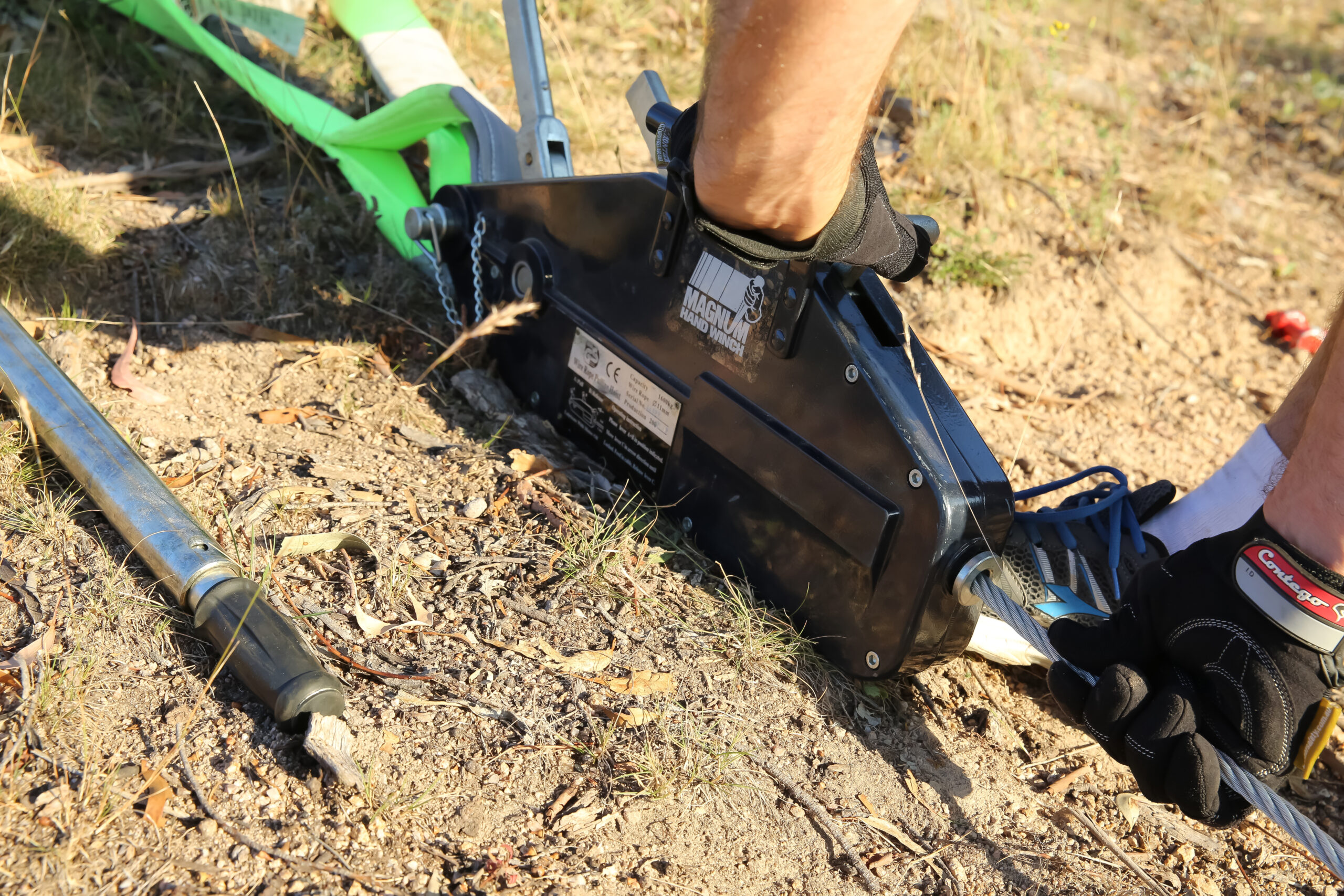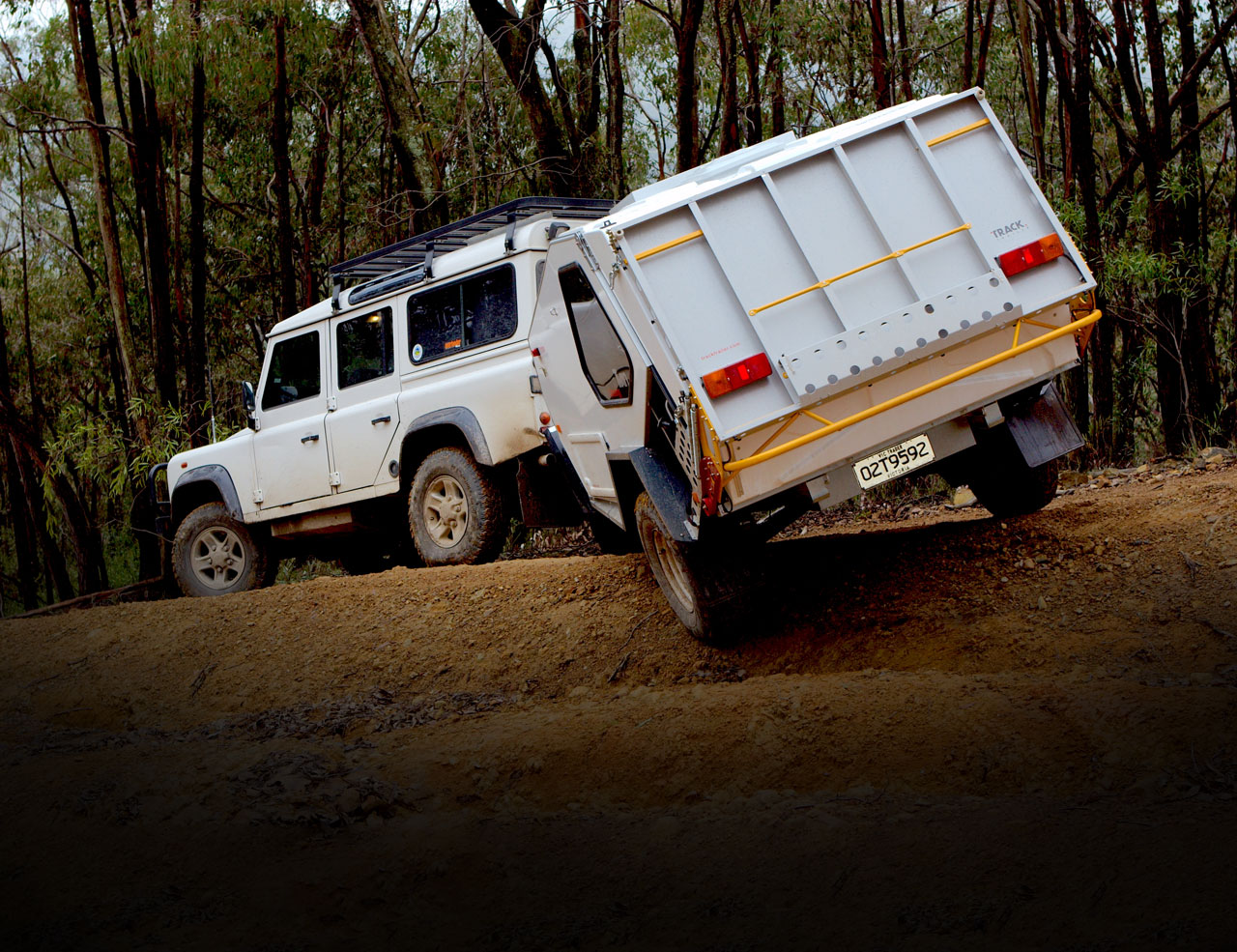For those of us old enough to remember, four-wheel drive recoveries once used to be a lot of hard yakka. Sweat pouring – every second word out of your mouth a curse word type of hard yakka – and yep, slow as a wet week too. A simple bog recovery could take hours of work with several people often taking turns pumping the hand winch handle. No, not at all like today’s winch recoveries which are simply a matter of rolling out the rope. Then operating a switch while an electric motor whirs away shouldering all the load.
In times past, electric or pneumatic winches were very expensive. With only a few manufacturers to choose from. Today we are spoilt for both choice and price range, so it is no wonder most of our 4X4s now sport an electric winch of some sort.
With this in mind we decided to first take a look at how a hand winch recovery works; and second, to find out if the trusty old hand winch still has a useful place in today’s off-road recovery world.

The mechanics
Hand winches work by moving a steel wire rope in-line through a dual clamping system. At no point does the cable become bent or rolled over a drum. A clutch mechanism allows the cable to be initially fed through the winch, and slack to be taken up. Once the clutch is disengaged there are two levers. One forward and one reverse, onto which the hand lever bar is fitted. When the hand lever is operated, the rope is moved a few inches at a time through the winch before being re-clamped (and allowing the process to be carried out again).
You have no doubt figured out that in order to operate a hand winch you have to be standing right next to it (and the highly tensioned wire rope) during a recovery. Hardly ideal, is it? Using an electric winch you can operate the recovery from the relative safety of your vehicle. So how is hand winching safety achieved?

Hand winch split pin safety
During a hand winch recovery, you should still put all of your usual safety list in place. Cable dampeners, keep bystanders away, rated shackles and recovery points. There is a built-in safety device in all hand winches called a shear pin. The shear pin is located at the base of the forward handle and is deliberately designed to be the weakest link in the system. In the event that excessive force has been applied, the shear pin is designed to fail well before a wire rope, a hook or a rated shackle. That being said it is important to have that extra safety net in place. A badly damaged wire rope may fail before the shear pin if it has gone unnoticed.
If the shear pin fails, the load is still supported. It is simply a matter of replacing the pin and then mechanically reducing the load being recovered (double line pull, more shovel work, etc). Most manufacturers supply spare shear pins (usually located in the carry handle), and additional spares are readily available.

Hand winch benefits
Despite the gruelling labour you may have to put into the hand winch, there are some benefits to this portable device. Winching sideways, backwards or any other way is easily achieved. Often without the need for complex offset pulls with multiple snatch blocks and extension straps that you would be compelled to perform with a front-mounted electric winch. Another benefit is that you will no longer require your Danoz Aerofit.
Yep, pack that bad boy away because you are going to get all the exercise you need with your hand winch. Water crossings… no problem, you no longer have that lingering thought in the back of your head about exactly how waterproof the winch housing is because it simply does not matter; no electrics means one less thing can go wrong. Simply keep the hand winch free from dust and mud build-up, and no worries.
On the downside though, you have now found yourself a fairly bulky and weighty item that you need to store along with the rest of your gear. And recovery times are greatly increased. Other than that, there is really is no reason why you should not carry a hand winch on your travels. It really is a very versatile piece of gear that has withstood the test of time.

Winching safety
The loads and potential energy during any winching operation can be potentially fatal if something goes wrong. Hand winching should be treated with the same diligence as electric or hydraulic winching.

Use dampeners or ‘air brakes’ over winching ropes. Multiple dampeners (2m from EACH end, over joins and on each side of multiple line pulls) should always be used – a simple blanket or jacket can be used if required.
Use only rated shackles and recovery points. Using a factory tie-down point or tow ball is a disaster waiting to happen.
On that note, never use a tow ball as a recovery point: It could fail and become a deadly missile.
Keep bystanders away, at least 1.5 times the length of the recovery.
Inspect your gear for damage before and after each use.

Do not exceed equipment work load limits (WLLs).
Always use tree trunk protectors.
If you would like to improve your skills and learn advanced techniques, book in for an accredited winch recovery course – you will be amazed at what you will learn.

Hand winch tips
- If winching solo, use a dragging chock on inclines (see picture) – it will act as your ‘brake rider’.
- Change your stroke from handle upright to a sideways motion, so you can use your whole body weight.
- Make sure you carry spare shear pins. Your hand winch is pretty well useless without them.
- Don’t forget to pack your normal recovery kit: Those four tips can still come in very handy.
Words and Images by Scott Mason









